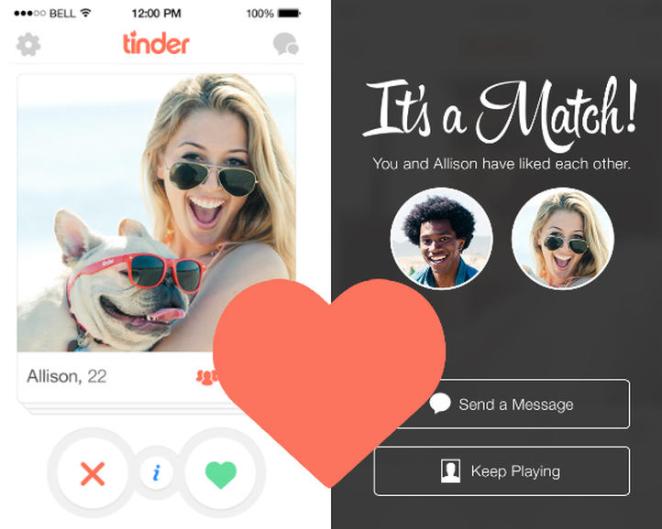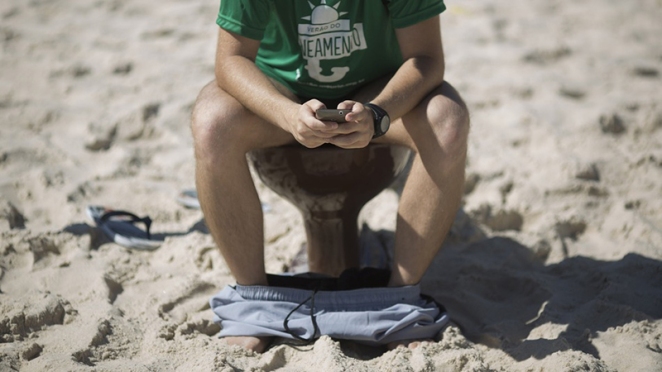
I might be a little behind on the whole Tinder think piece idea, because Tinder has been around for awhile now. But, it looks like it’s staying. So I’m going to write a slightly late Tinder think piece about technology and dating and also our attention spans.
Let’s first go through a brief and admittedly under-researched history of the dating app:
Dating apps have always been inevitable. A long time ago, a man probably put an ad in the newspaper looking for a wife. He was too busy to actively pursue her, to take her on romantic wagon rides a la little house on the prairie. So, he requested a fine gentlewoman of healthy stock with a relatively stable fortune or a few farm animals to her name. Some woman who was eager to to be married and whose parents wanted to get rid of her probably saw the ad and eagerly answered with a proposal. It was a transaction much like the dating apps and sites of today.
**A fun, unsurprising, dark fact: the first woman to ever put a personal ad in the paper was Helen Morrison in 1727. Her primary request was to find “somebody nice to spend her life with.” Instead of finding that, she was sentenced to 4 weeks in an insane asylum for posting the ad. And thus began the process of harshly punishing women for articulating desire, no matter how mild.**
Fast forward some years and we have technology, and these print dating requests are bound to go digital. In 1965, a Harvard student created Operation Match, the first computerized dating service. Users answered questionnaires and the answers were used to gauge compatibility.
Then, the 90’s happened and the Internet was still slow but it was at least there. This was when match.com was founded. Dating sites initially held a certain stigma. People tended to associate them with sad single women who checked their dating profile in between online orders of QVC and bulk cat-food. But, it’s gradually morphed from catering to older adults the world has dubbed spinsters to younger adults who just consider themselves too busy to date. In between checking Facebook and Instagram and whatever other new technological breakthrough used to create a digital social life has recently emerged, they can get notifications about who is attracted to them based off of a photo and a list of vague interests.
This is why people consider Tinder shallow. People swipe right (approve) or swipe left (deny) at a glance. It’s a hybrid hot or not game; their profile pic is the first item seen but the swiper has to decide if their interests are attractive too.
 Then, if there’s a match the people can chat digitally, state their intentions, and then determine whether or not to proceed into the real world.
Then, if there’s a match the people can chat digitally, state their intentions, and then determine whether or not to proceed into the real world.
It’s like a multi-layer job interview, a business transaction. People don’t have to give any time to swiping right or left, only a little more time to assessing their interests, and then some time to chatting digitally. They can make a fully formed decision about whether or not to dedicate the limited resource of time to actually meeting someone in person.
Technology has simply made dating more efficient. It’s always been a type of business transaction, but like all types of business, technology has just made it easier to do quickly.
And it’s also made dating more digestible. One of the pros of technology has been that we can quickly gather information – the Internet and social media has made activist work easier to organize, has made news accessible to a wider audience, and has given people a sense of community outside of the one they are immediately situated in. It also means that we can now get the news in the form of listicles and can receive updates on friends, family, and co-workers all while scrolling through our Facebook mobile apps and taking a shit. Because, with our waning attention spans, we wouldn’t be able to handle much more.
We can also, thanks to technology, meet our soul mates or our next hookup partner while taking a shit. They’ll never know that when you sent them that charming, mass-produced opening line that you were sitting on the toilet with your pants around your ankles.
 Or maybe you were dating while doing homework, or at work, or while having sex with somebody else.
Or maybe you were dating while doing homework, or at work, or while having sex with somebody else.
Basically, we want our love lives to be controllable and accessible. We want a way to digitize out non-tangible emotions into something that feels like a data assessment.
Maybe that’s why I always consider Tinder an app for people who work at startups. I always picture khaki clad button-up Bros who use google analytics to be experts at Tinder dating. This vision is not accurate and is entirely unfounded, but that’s still what I picture.
And that’s because Tinder oozes a certain corporate culture. Not corporate like Goldman Sachs, but cool corporate as in we have a functioning bar and organic snacks in our office type corporate.
Tinder says we still wanna date, we’re just not gonna sacrifice any time to do it.
